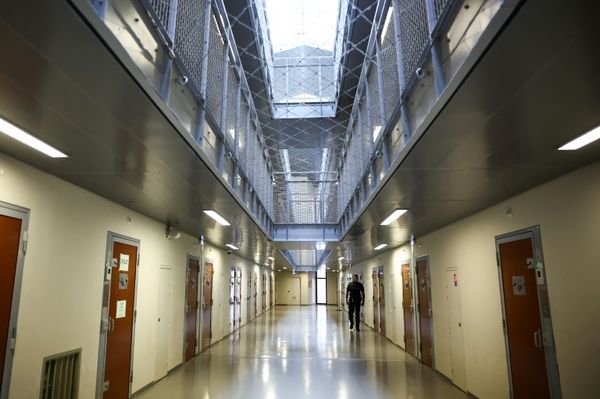Tipping may be costing you a pretty penny you can't really afford. And your retirement might be paying the price.
Those gratuities for good service, which typically run 20% or more at a sit-down restaurant, might also be putting a hidden strain on your budget. Those extra charges might also be sitting on your credit card statement costing you interest. Or, even worse, making it tougher to sock away dollars in your 401(k).
"Tipping may seem like a small expense, but it can have a big impact on your ability to save for retirement," said Cassandra Happe, analyst at WalletHub. "As tipping becomes more common, you may find yourself spending more on tips, which means less money for savings."
Gratuities can be a hidden budget-buster, adds Happe. "Many people," said Happe, "forget to factor tipping into their budget."
Costs Of Tipping
Many Americans are starting to rebel as tipping goes mainstream. More retail establishments are asking for tips. Tip jars are found on barista and bakery checkout counters. Automatic tips are added to bills. Digital tip-suggestion screens often start at 20% and go as high as 25%.
In fact, nearly three in four Americans say, "enough is enough" and think that tipping has "gotten out of control," according to a new tipping survey from personal finance site WalletHub. The survey, released earlier in March, noted that some people have even been asked to tip self-checkout machines with no human interaction.
Pushback on tipping was also apparent in a Bankrate survey released last June. A majority of U.S. adults (66%) say they have a "negative view" about tipping. And one in three Americans (32%) said they were "annoyed" with pre-entered tip screens.
Tipping Adds Up
This story isn't about stiffing waiters, servers, hairdressers, bartenders, takeout delivery drivers and other service workers who provide good service and who rely on tips for a large chunk of their income. This is a warning that the cost of tipping needs to be an official part of the household budget. Treat tipping like an expense, just like rent, the electric bill and the monthly car payment.
Because if you don't add these extra charges to the expense side of your ledger, you may consistently and unknowingly bust your budget each month. And the downside to that is higher debt and skimpier savings.
The new tipping culture is colliding with the higher costs of eggs, steak, cocktails and pretty much everything else due to higher inflation, adds Rob Leiphart, vice president of financial planning at RB Capital Management.
Watching Tip Inflation
And that means the cost of tipping adds up even more.
"We've seen a large amount of inflation both in restaurants and the costs of goods overall," said Leiphart. "So, if you're tipping on top of that, your 20% tip is on a larger number."
A restaurant bill for a nice dinner with apps, entrees, wine, and dessert that costs $200, is a lot more costly once the tip is added in. "Your bill really isn't $200, it's $240," said Leiphart.
Restaurant Tipping Mounts
Eating out was the third largest expense for U.S. households in 2022, according to the U.S. Bureau of Labor Statistics. Only housing and transportation are bigger parts of a household budget, the government says.
And eating out is a big part of the American lifestyle. Last year, the average person dined out three times per month and placed a food delivery order four to five times a month, according to a survey from US Foods, a domestic food distributor. Eating out has become a fabric of social life in America. Two-thirds of Americans (63%) say they dine out for the "atmosphere" and 48% say they go to restaurants to "socialize."
But all that fun adds up. Spending on food away from home is becoming more costly due to inflation.
Inflation And Tipping
Americans spent $3,639, on average, eating out in 2022, up more than 20.1% from 2021. That's more than $300 per month. If you assume that the spending doesn't include tips, you're talking an additional $728 in tip spending per year, assuming a customary 20% tip.
If you invest that $728 each year instead, and earn an annual return of 8%, your account balance would grow to more than $96,000 over 30 years.
To be sure, if you have the cash to generously tip and your retirement savings are on track to meet your goals, then spending and tipping is fine. But if you're behind on contributing to your 401(k) or IRA, it's time to cut back on discretionary spending and tipping.
"So, look at your monthly budget, and if you're budgeting no more than 10% or 15% of your monthly spend towards going out, then you need to back the tips into that equation, too," said Leiphart.
An 18% Lift To Bills
When it comes to tipping, on average Americans tip 18% of their bill, according to US Foods. The most common tip amount is 20%. Four of 10 Americans say they tip the customary 20%. Just 6% say they regularly tip 25%, and a small minority (1%) are very generous and put down a 30% gratuity.
Personal finance pros say Americans must factor in the extra cost of tipping.
"Frequently eating out without considering the impact of tipping can strain budgets, which can hinder retirement savings," said WalletHub's Happe.
Hit To Retirement
To boost your chances of a secure retirement, it's a wise decision to review your tipping expenses and consider redirecting some of those funds toward retirement savings, Happe advises.
"If you find that a substantial portion of your discretionary income is going towards tipping at sit-down restaurants, and it's hindering you from adequately funding necessary financial priorities such as contributing to an IRA, then it's time to reassess your spending habits," Happe said. "By reallocating some of those funds towards retirement savings, you can ensure a more secure financial future for yourself."
But since eating out is a social activity enjoyed by so many, complete abstinence may not be practical, says Happe.
Options For Foodies
So, what's a foodie to do?
"Individuals should assess their spending and find a balance that allows them to save for retirement without sacrificing their enjoyment," said Happe. "It's important to make mindful choices that align with long-term financial goals while still enjoying life's pleasures in moderation."
Tippers who pay with credit cards but who don't pay off their bill in full each month must be mindful of eating their way into debt. Interest rates on credit card balances are at record highs, with some cards charging more than 30%.
Do The Budget Math
The budgetary math simply doesn't add up for the carry-a-balance crowd.
"Let's assume you're someone who carries a bill," said Leiphart. "Now all of a sudden this 20% tip is, you know, 29% on top of that."
One way to trim your spending on restaurants and the tip that follows the meal is to embrace a so-called "no-eating out challenge." Think of it like a financial diet. Challenge your taste buds by swearing off eating out and ordering takeout for a month or two each year. If you do, it will be akin to tipping yourself or your 401(k).







